
It was raining when we woke, and for a moment, I thought we might postpone our fifth visit to nearby tide pools. Instead, we grabbed our rain jackets and headed to the car. Caroline nudged my arm as we walked up to a couple of deer browsing in the front yard until we snuck up on them, startling the two as much as we were started. We stood there eyeballing each other, and to my surprise, they didn’t bolt. They returned to picking off the tender tops of whatever looked appealing to them as long as we didn’t move. Everything was great between the four of us until Caroline, and I were ready to get into our car, the one behind the deer on the left, and that’s when they decided it was time to put more space between us. If you look at the deer on the right, you might notice it’s a male; his immature antlers are covered in velvet.

After the deer took off, we checked on the health of the iris and saw that of the succulent foraging opportunities available to the deer, purple flowers apparently have no appeal. As June can’t be here to see her iris in bloom, I’m taking plenty of photos, so she might enjoy them from afar.
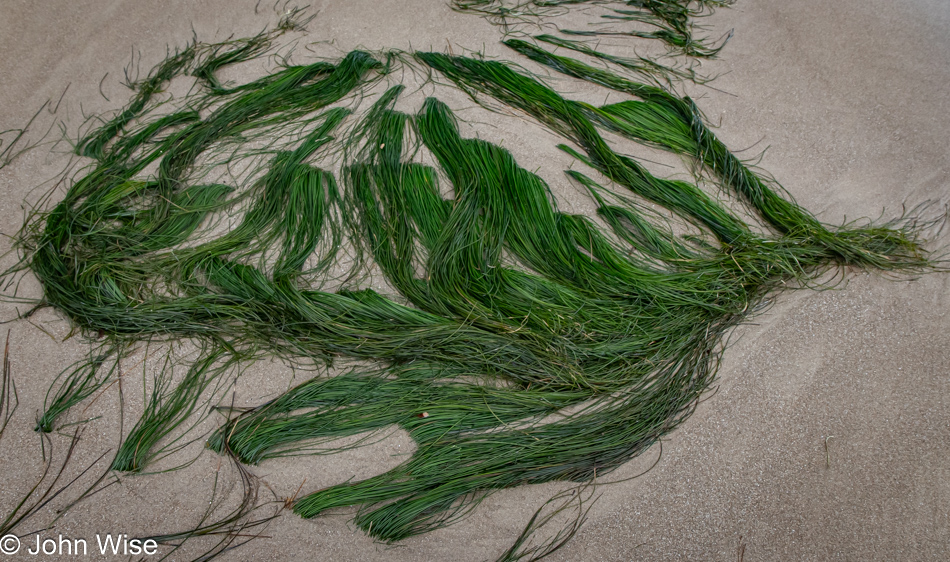
After so many days visiting the coast north of us during this series of extraordinary low tides, meaning they are negative values and are far lower than usual, it becomes a bit more difficult to share new things, so that’s what I was trying to focus on today. From the look of the grass patterns, I don’t believe anyone would be jumping to identify where we are: we have returned to the quiet, uncrowded Fogarty Creek.

Plants that belong under the water gain visually when swaying in the current. Here at low tide outside of their domain, they are listless, which is relatively okay for the sea stars, barnacles, and mussels as they don’t move a lot unless they are eating, but you get the idea, I hope.
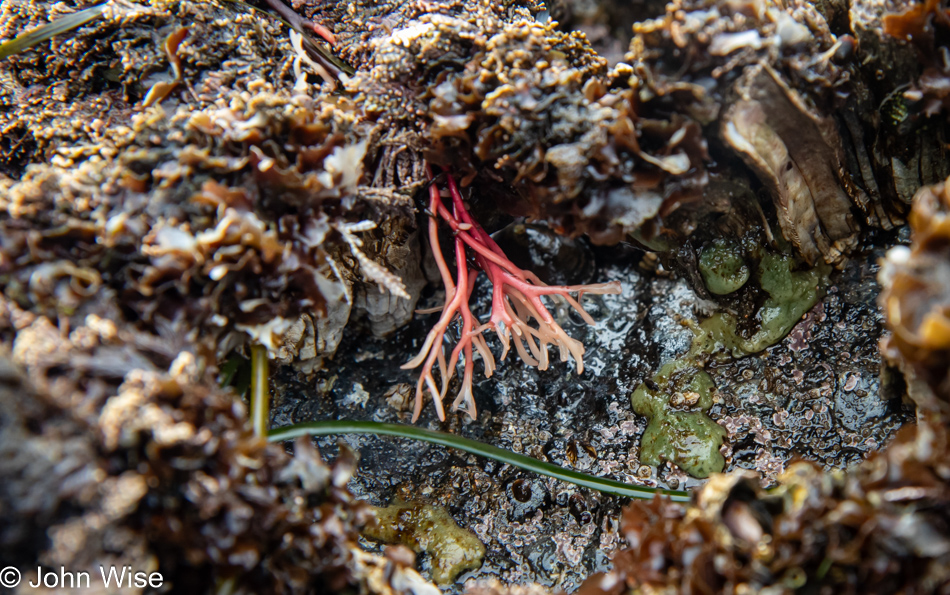
I just looked at the media library of images I’ve already uploaded and shared, and at about 70 photos from tide pools, I’d guess that just as I’ve had enough writing about them, maybe you’ve seen enough. Well, I’m almost done with only four left, which should be it for the rest of this Oregon summer adventure on the coast.
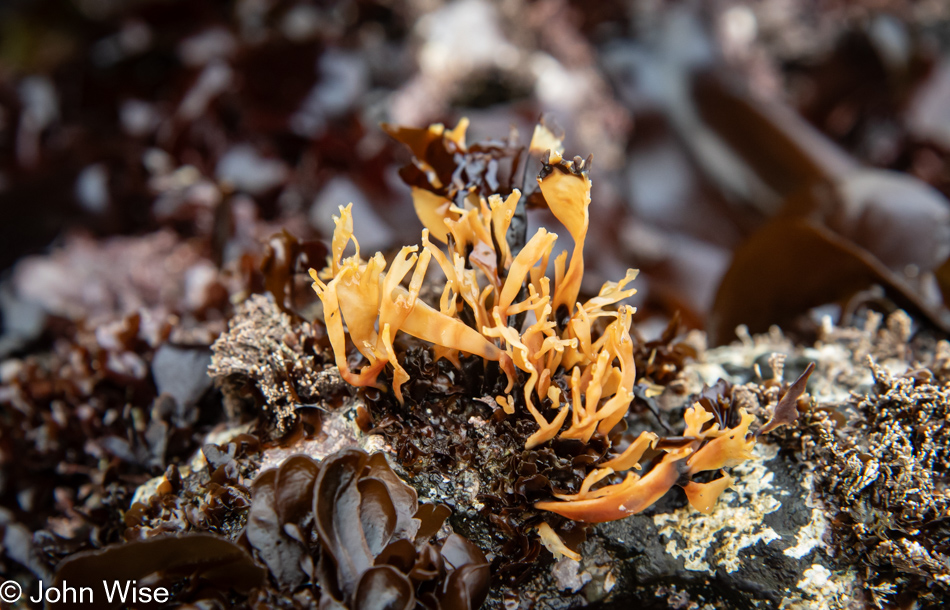
Do any of us stop and think about the vital role sea plants play in our environment? Not only do they produce oxygen in the ocean, they play an important part in creating oxygen that we humans breathe. They sequester CO2 and absorb and release essential elements like nitrogen and phosphorus while also creating habitats that provide shelter, breeding grounds, and nurseries for fish and invertebrates.
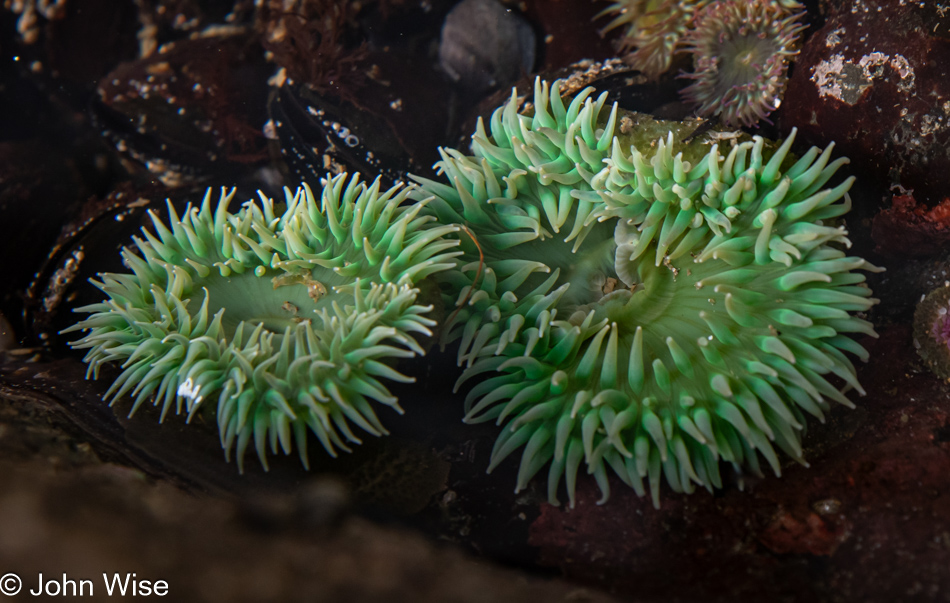
I thought I’d already shared enough images of anemones, but these two look stunningly perfect.

A handsome crab, for sure.

If I were to promise that this is the last anemone photo I’ll post during this extended stay in Oregon, I might easily prove myself a liar, so I’ll just offer my word that this is the last time during this post, I swear.

Even without AI, we are fortunate to have the electronic research tools we do, as Caroline was able to identify that this is the breast bone of a cormorant and the notches that look like teeth in some say, that’s where the rib bones would have attached.
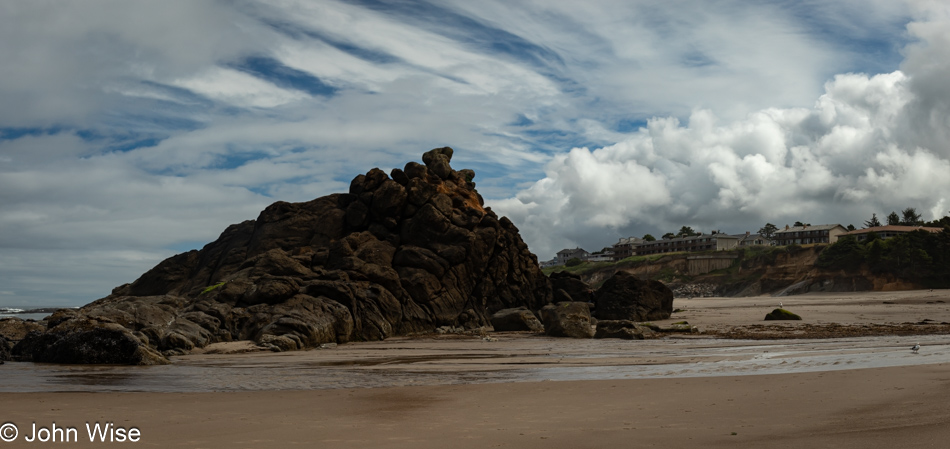
As the tide begins to return, we leave Fogarty Beach to explore the rest of our Sunday.

We didn’t even get out of the parking lot of Fogarty before the forest scene outside our car presented a sight that made the two of us simultaneously say, Wow!
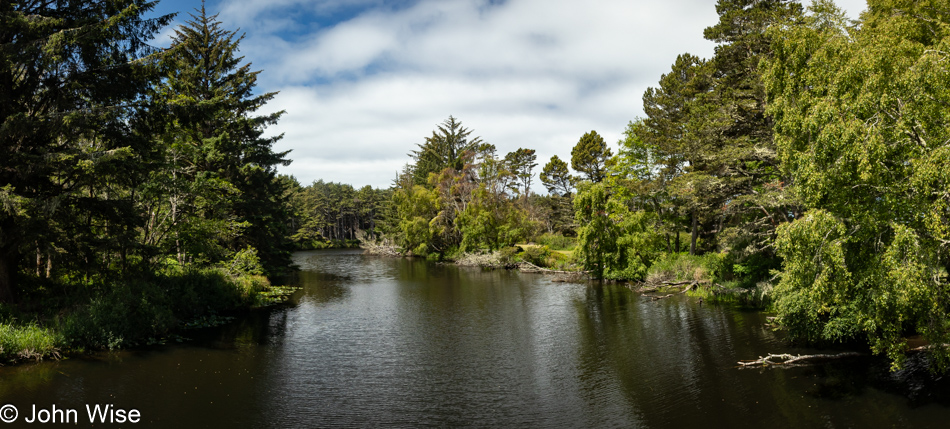
Some days ago, passing Beaver Creek in Seal Rock, the river was perfectly still, offering an incredible reflection of the surrounding trees. That was what I had been hoping for today. Writing this up a couple of days after the events of the day, I’m surprised that we stopped in Newport at the Newport Cafe for a couple of their Pacific Seafood Scrambles and made it nearly 30 miles south down the coast before taking this photo. Usually, I’m inspired to snap a couple of images here and there every few miles, it seems.
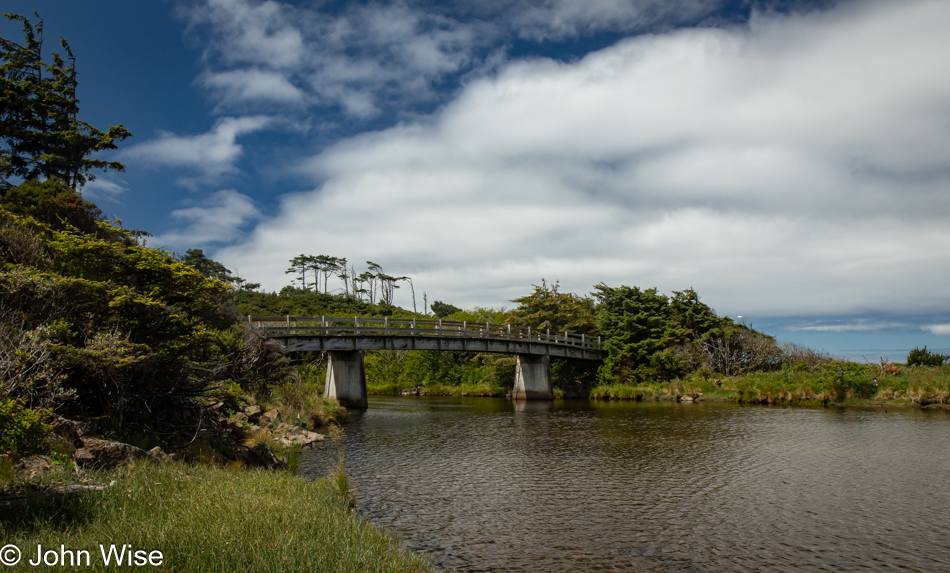
This bridge crosses Beaver Creek just before it flows into the Pacific Ocean at Ona Beach.
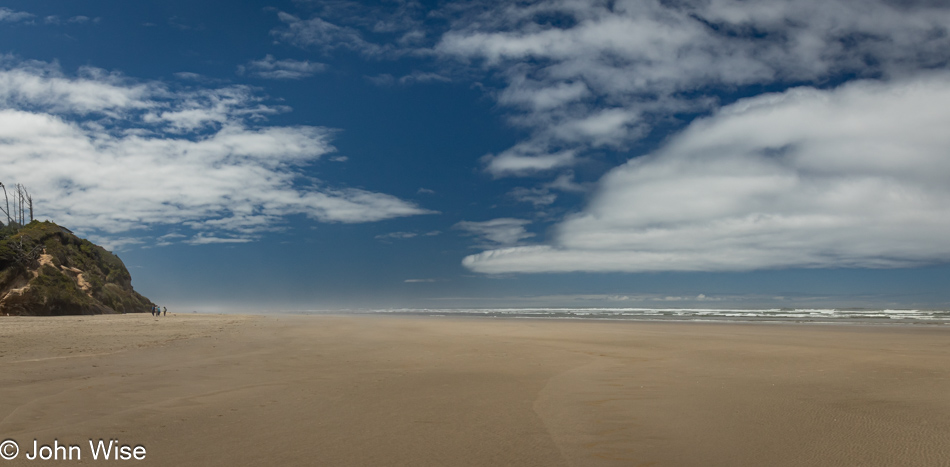
We’d passed by Ona Beach earlier on this trip, a couple of times actually, but Caroline’s memory suggested that it wasn’t one of our favorite places. With the car parked and a dearth of non-tide pool images in the camera, I asked her to indulge me and walk out to see the beach. To her, and my surprise, it was beautiful. It probably helped that the overcast, cloudy sky further north was clearing more and more down here.

There’s a tiny pullout that one should be driving mighty slowly if they want to catch it as they climb Cape Perpetua, obviously, I managed to do just that. This viewpoint is looking north towards Yachats.
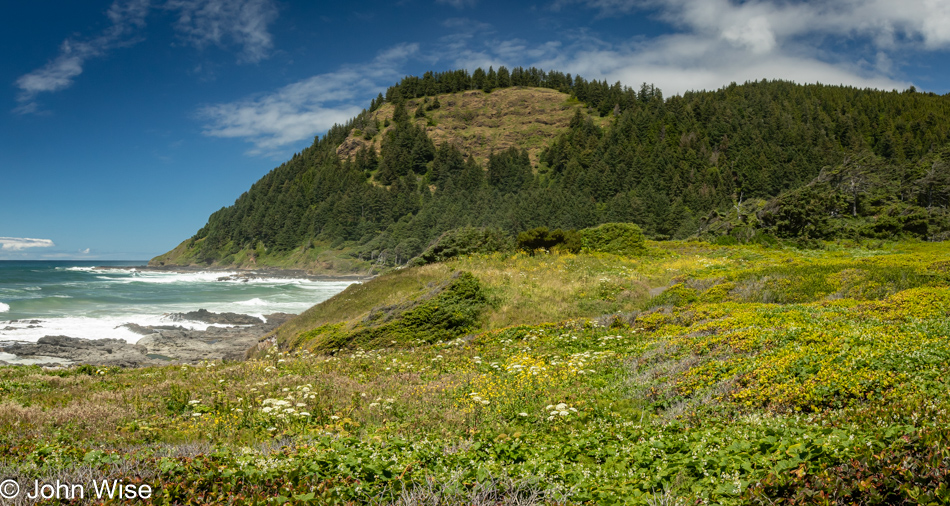
While impossible to see in this photo, up on that mountain in the background is the stone shelter on Cape Perpetua, which we hiked to last weekend. It’s at the spot right before the steeper descent to the ocean, about 1,000 feet above the sea. I really should put more emphasis on the lush landscape our eyes cannot get enough of or believe. After so many late fall visits to Oregon, there’s an almost normal pallet of colors that the coastal region is painted with, but this one includes thousands of new hues.

We skipped Devils Churn so we wouldn’t get lost down in the chasm as we’ve done on many other occasions and instead opted to drop in on the Thor’s Well area, where we’d get a couple of photos and move on to the Darlingtonia State Natural Site that I wanted to see in the summer as we’ve only ever seen the strange plant around Thanksgiving. We didn’t even make it down to the rocky level of the area before we became transfixed on water bursting out of this mini chasm.

After maybe a half hour, we got moving along over to the Spouting Horn.

By the time we arrived down on the lower level near Thor’s Well, everyone had moved away from it as the surf was exploding after crashing into the shore. Two years ago, I took a photo of Caroline out near Thor’s Well, though she was not close enough to look in as on that day, the surf was pretty high too. About two hours later, with over 120 photos of these kinds of images, we were finally able to pull ourselves away reluctantly and with great effort.

I titled this post with a reference to the availability of too much daylight here during the summer. For two people conditioned to take advantage of the entire day due to those short days going into winter, we are trying the same, and after two weeks of constant seizing the day, we were ready to return north and call it quits. We needed a break, but not before this last photo of a dew-soaked thistle.

Okay, just this last photo of the summer grasses, and then I promise we’ll leave. Oops, forgot all about those carnivorous Darlingtonias down near Florence. Maybe next weekend, we’ll catch those insect-eating plants.
So, yeah, this was the end of the day for us, other than eating, knitting, photo prep, and just hanging out and trying to be mindless and quiet.